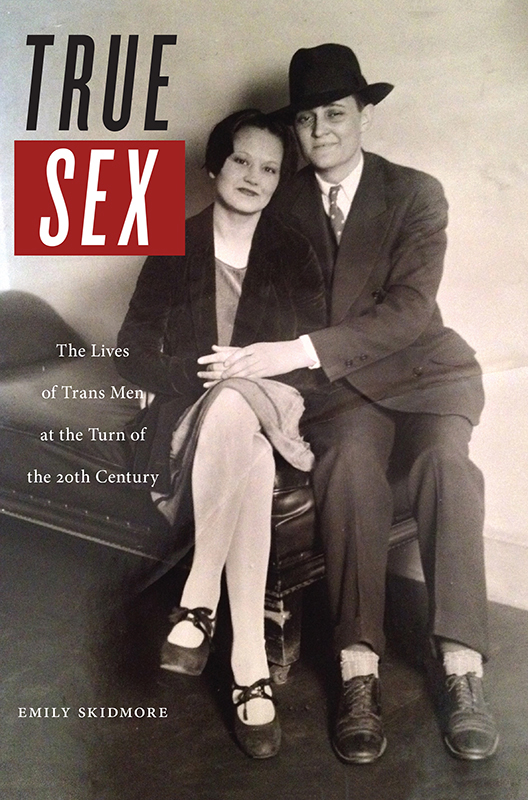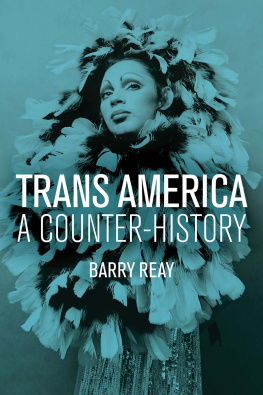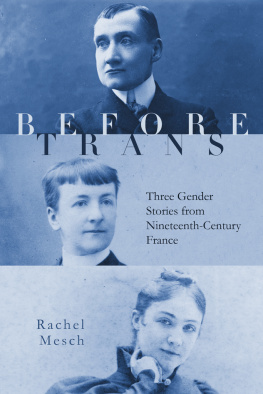Contents
Guide
Pagebreaks of the print version

TRUE SEX
True Sex
The Lives of Trans Men at the Turn of the Twentieth Century
Emily Skidmore

NEW YORK UNIVERSITY PRESS
New York
NEW YORK UNIVERSITY PRESS
New York
www.nyupress.org
2017 by New York University
All rights reserved
References to Internet websites (URLs) were accurate at the time of writing. Neither the author nor New York University Press is responsible for URLs that may have expired or changed since the manuscript was prepared.
ISBN: 978-1-4798-7063-9
For Library of Congress Cataloging-in-Publication data, please contact the Library of Congress.
New York University Press books are printed on acid-free paper, and their binding materials are chosen for strength and durability. We strive to use environmentally responsible suppliers and materials to the greatest extent possible in publishing our books.
Manufactured in the United States of America
10 9 8 7 6 5 4 3 2 1
Also available as an ebook
CONTENTS
Introduction
Harry Gormans Buffalo
In 1902, thirty-three-year-old Harry Gorman was hospitalized in Buffalo, New York, after he suffered a serious fall that broke one of his legs. While on the surface this event sounds inconsequential, it prompted a firestorm of media coverage. Indeed, on his hospital bed, it was revealed that Gorman lacked the anatomy generally associated with malenessdespite having lived as a man for more than twenty years. This revelation drew attention from newspapers across the nation, from Tucson to Boston and Fort Worth to New York City.
Gorman explained that his decision to dress as a man had been made in his youth, motivated by both a desire for freedom and a frustration with the limited opportunities available to women. He told the New York World , I wanted to be a man, and since I reached my thirteenth birthday[,] I have worn male attire. I landed in New York twenty years ago. I have worked in all the large cities of the United States and Canada as a man. People think they are so smart. Why, I fooled them all, and if it had not been for my accident when I fell and broke a leg[,] I would still be a man. Gorman went on to explain that, as a man, he took advantage of all the opportunities with which men were provided, including getting married to a woman. He also voted, telling the New York World , Im a good democrat and have voted the straight ticket for the last seven years.
Perhaps most sensational of all, however, was Gormans revelation that he was not the only trans man to call Buffalo home. In fact, he claimed that he knew at least ten women right here in Buffalo who wear mens clothing and who hold mens positions. menthose undetected trans men were frequently in saloons, one of the most hallowed male institutions in the early twentieth century, mocking and having many a good hearty laughs at the expense of the men.
Just as the brief story of Gorman initially may appear inconsequential, the revelation of Gormans true sex might, at first glance, similarly seem unimportant to the history of the United States at the turn of the twentieth century. However, nothing could be further from the truth. Newspapers across the country discussed Gormans case in articles under flashy headlines such as She Was a Man for 20 Years. The blitz of newspaper coverage about Harry Gorman illustrates that Americans at the beginning of that century were fascinated with genderparticularly its permeability, its elasticity, and the ways it intersected with race, class, and sexuality. Even though the disclosure of Gormans true sex was described by some newspapers as startling, it is likely that this was not the first story of a trans man that newspaper readers had encountered. In fact, newspapers around the country regularly reported stories of individuals who had been assigned female at birth but chose to live as male; at least sixty-five cases appeared in U.S. newspapers between the 1870s and 1930s.
For example, in 1883, Frank Dubois gained national attention when his true sex was discovered. Anatomically female (and the birth parent of two children), Dubois abandoned his family in Belvidere, Illinois, to start a new life in the small town of Waupun, Wisconsin. Once in Waupun, Dubois made a name for himself as a hardworking man, and he quickly settled down and married a young woman named Gertrude Fuller. Dubois fit so well within the small community that the townspeople only discovered his true sex when his former husband and their two children arrived in town searching for their departed wife and mother, attracting widespread attention in the nations newspapers.









